Hildreth Meière Documentary Series - Watch Trailer
Hildreth Meière Documentary Series - Watch Trailer
Commissioned by: Byron S. HarveyMedium: oil on canvasExecuted by: Hildreth Meière; Lynn Fausett; Dean FausettInstalled by: RambuschRelocated to: Above the grand staircase in Union Station, Kansas City
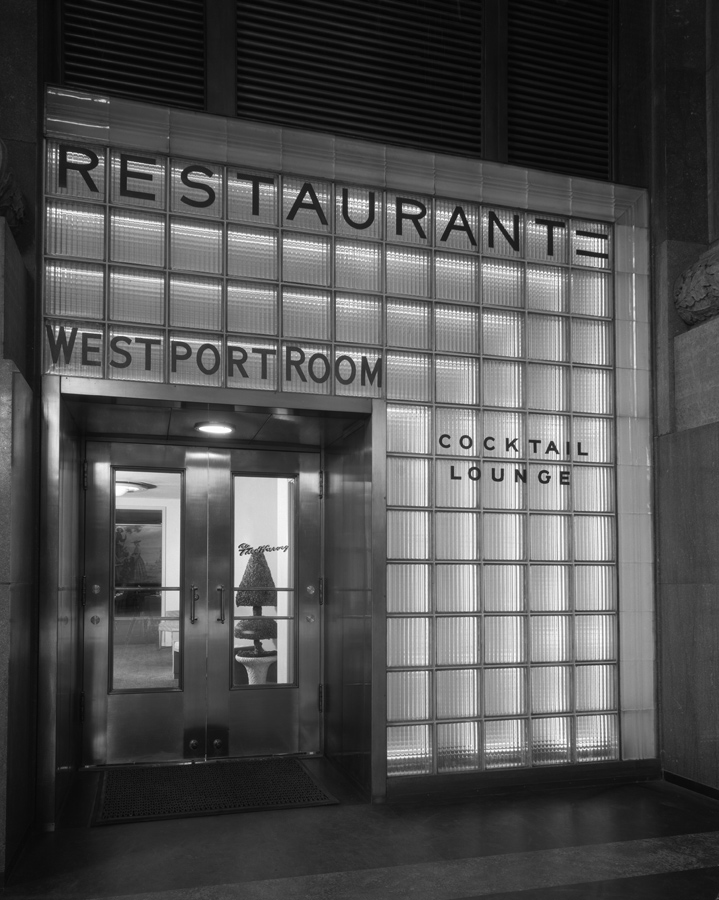
Entrance to Westport Room restaurant and cocktail lounge. Chicago History Museum, Hedrich-Blessing Collection, HB-04696-A, Chicago, IL
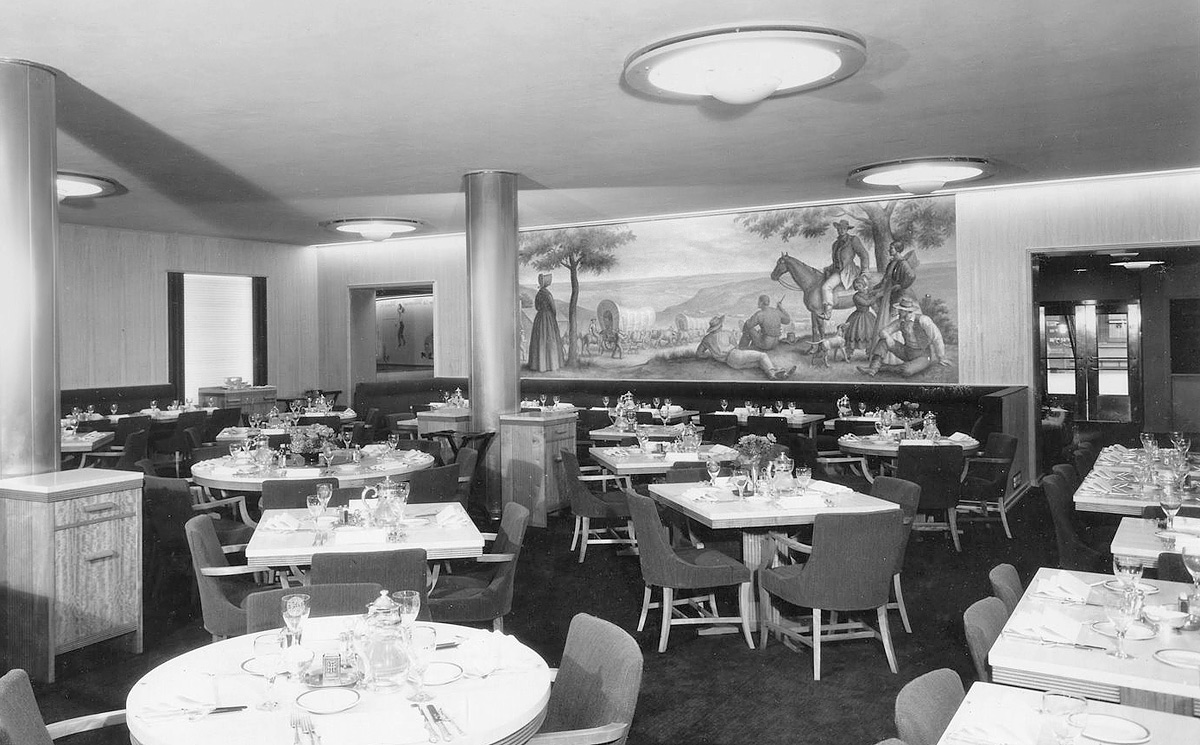
The Westport Room restaurant with Commerce of the Prairies on the wall, and the cocktail lounge visible through door on left
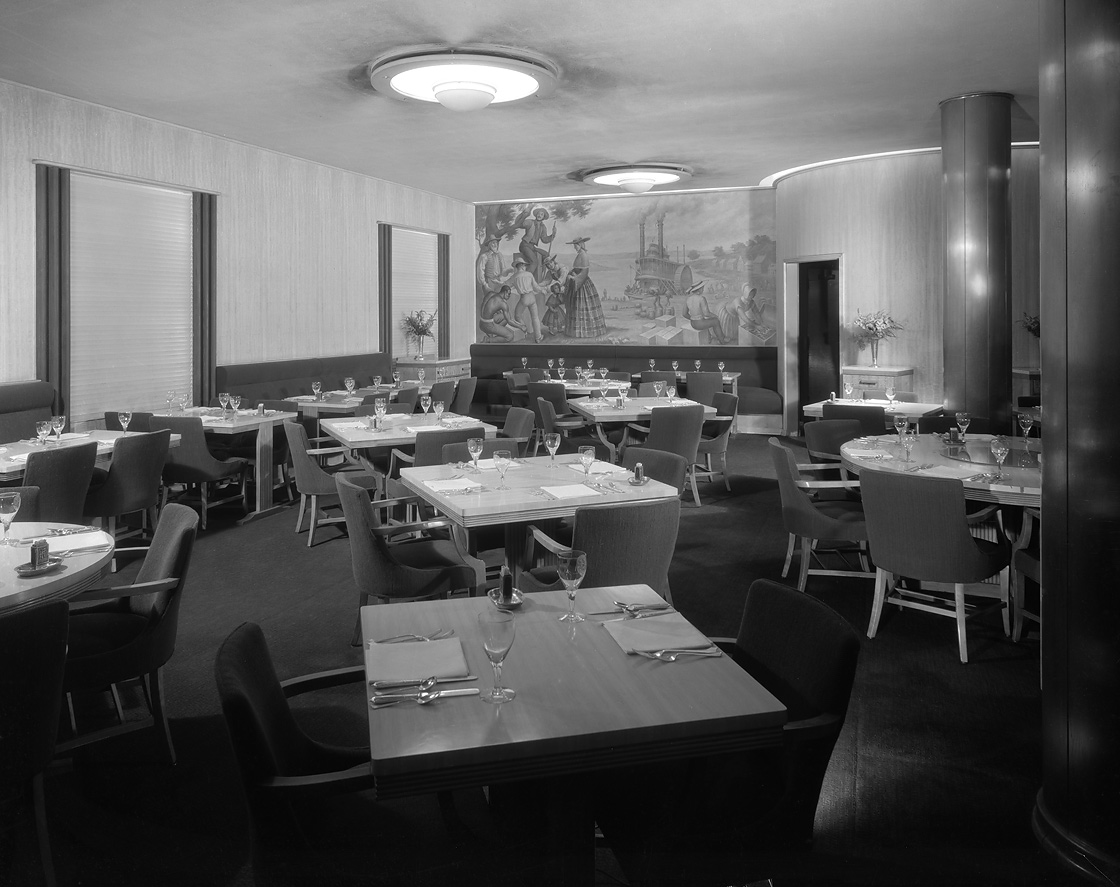
Westport Room restaurant with Arrival at Westport Landing. Chicago History Museum, Hedrich-Blessing Collection, HB-04696-E, Chicago, IL
Byron S. Harvey, president of Fred Harvey, commissioned Hildreth Meière to paint three murals with a historic theme as part of the modernization of the Westport Room restaurant, and to decorate the adjacent cocktail lounge at Union Station in Kansas City, Missouri. The Harveys were old friends of Meière, and she worried about pleasing them with her murals:
I never went into a job where personal friendship was so much involved before, and I can honestly say that I never was more anxious to have things turn out right.1
Robert J. Raney, chief architect of Fred Harvey, was responsible for drawing up plans to modernize the entrance hall, foyer, cocktail lounge and restaurant that lowered the ceiling and created curvilinear walls. Harvey, who was based in Chicago, hired the Chicago architectural firm Holabird and Root as interior designers of the reconfigured spaces.
Holabird and Root’s head of interior design, Johns Harley Hopkins, was known for incorporating murals into his designs of public spaces. He was responsible for the colors in the rooms that harmonized with Meière’s murals, as well as for the design of the modern furniture.
Although in the past Mary Colter has been credited with having modernized the Westport Room, recent research by Fred Shaw shows that this was not the case.2 Colter was not responsible for the architectural renovation, did not design the furniture, did not select the colors for the space, and most importantly, did not hire Meière. Shaw writes:
Although Colter made practical contributions to the décor and artwork through critique, her own correspondence proves her role at the Westport Room amounted to that of a tenant’s representative.3
According to Shaw, Colter’s limited contribution was the suggestion that the backs of the banquettes be raised two inches and spaced four inches away from the walls in order to protect the murals.4 Colter also visited Meière in her studio and made several specific suggestions with regard to the imagery Meière and her assistants Lynn and Dean Faucett were depicting in the murals. Meière described Colter as a “thoughtful, constructive critic.”5
Westport Landing on the Missouri River was the starting point for west-bound travelers during the second quarter of the nineteenth century. Travelers from the east coast arrived by steamboat and provisioned themselves before starting out on one of four overland trails: the Oregon, California, Santa Fe, and Lewis & Clark. Meière’s three murals represent the activities for which Westport Landing was known: Arrival at Westport Landing, Outfitting at Westport Landing, and Commerce of the Prairies:
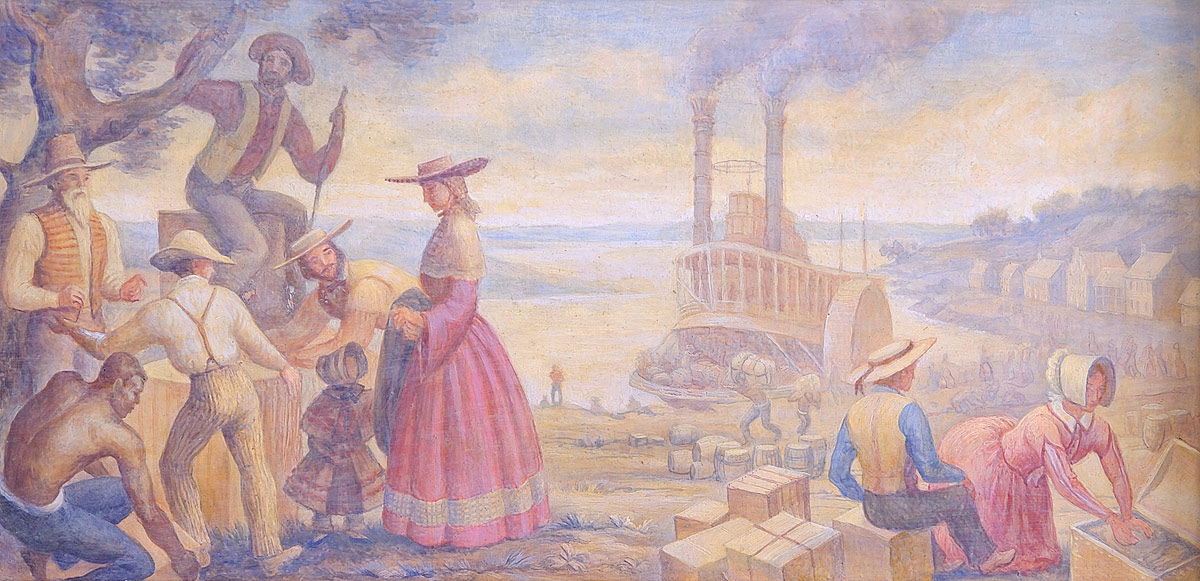
Arrival at Westport Landing, to-scale study in oil on masonite
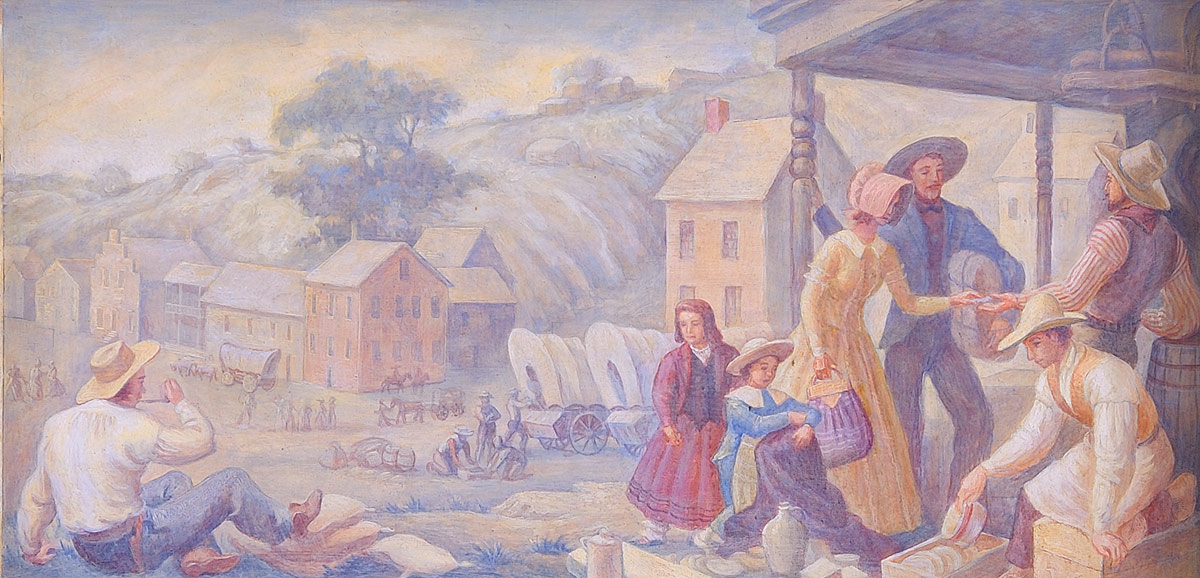
Outfitting at Westport Landing, to-scale study in oil on masonite

Commerce of the Prairies, to-scale study in oil on masonite
The Westport Room commission represented an integration of architecture and mural design that Meière believed to be essential to successful mural painting:
A good mural should be something that cannot be taken away without hurting the design of the building. If the building can look as well without it, it shouldn’t be there in the first place.6
Decorative menu covers based on lithographs of Meière’s designs, together with a full explanation of their historic importance to the early development of Kansas City reinforced the coordinated effect throughout the restaurant.
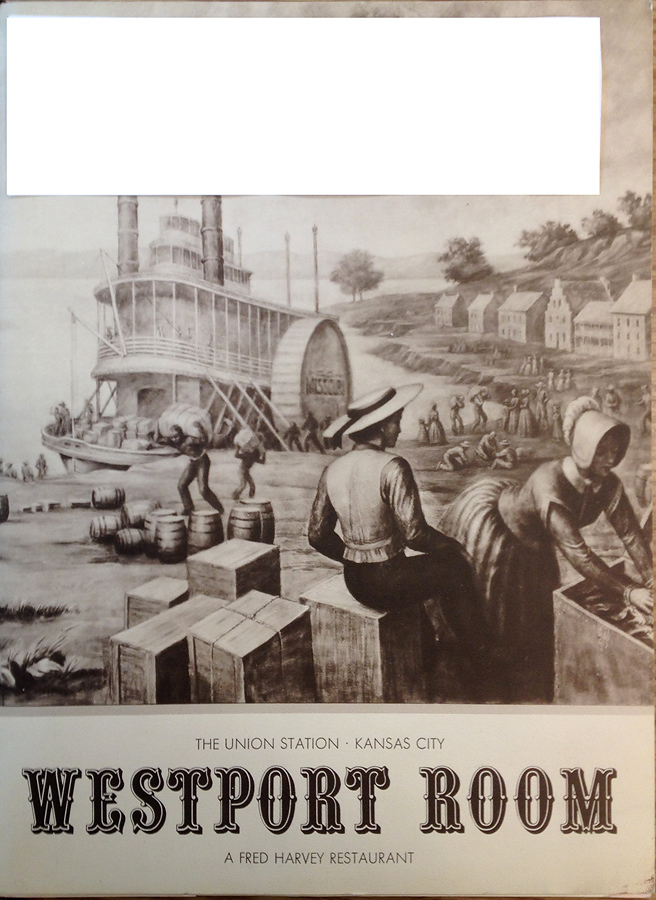
Front cover of menu, Westport Room restaurant. Hildreth Meière Papers, Archives of American Art, Smithsonian Institution, Washington, DC
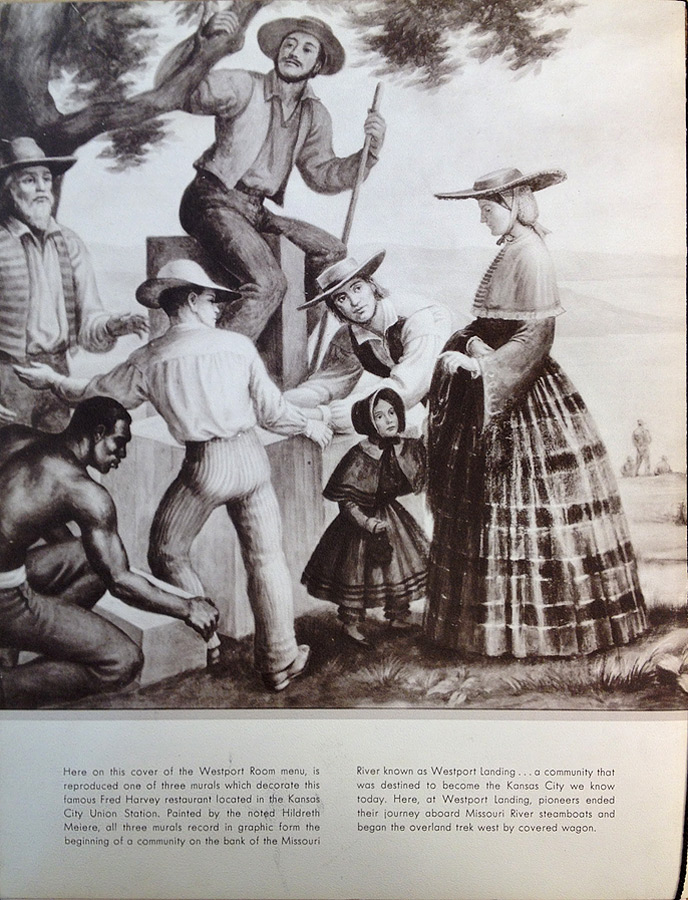
Rear cover of menu, Westport Room restaurant. Hildreth Meière Papers, Archives of American Art, Smithsonian Institution, Washington, DC
Meière’s three murals hung in the Westport Room from the restaurant’s opening in 1937 until its closure in 1968. In 1980, Daniel MacMorris restored and reconfigured the murals into a single panoramic mural for Riss International. Today the reconfigured mural is installed above the post office boxes in the Post Office at Union Station.
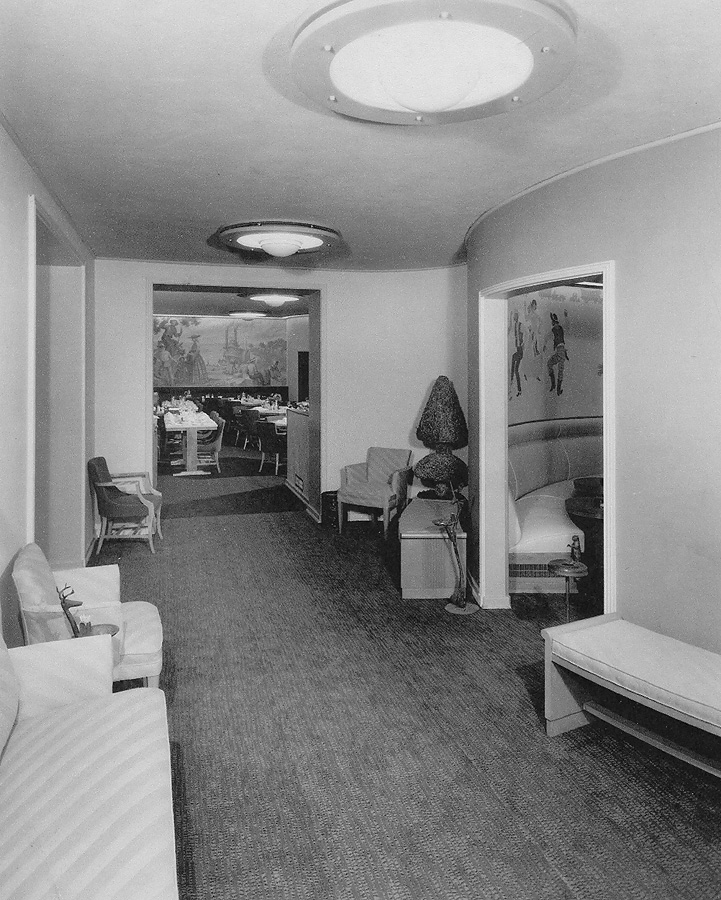
Entrance to Westport Room restaurant and adjacent cocktail lounge
To tie in with the Western theme of the murals in the Westport Room restaurant, Meière painted Western figures on the walls of the pear-shaped cocktail lounge.
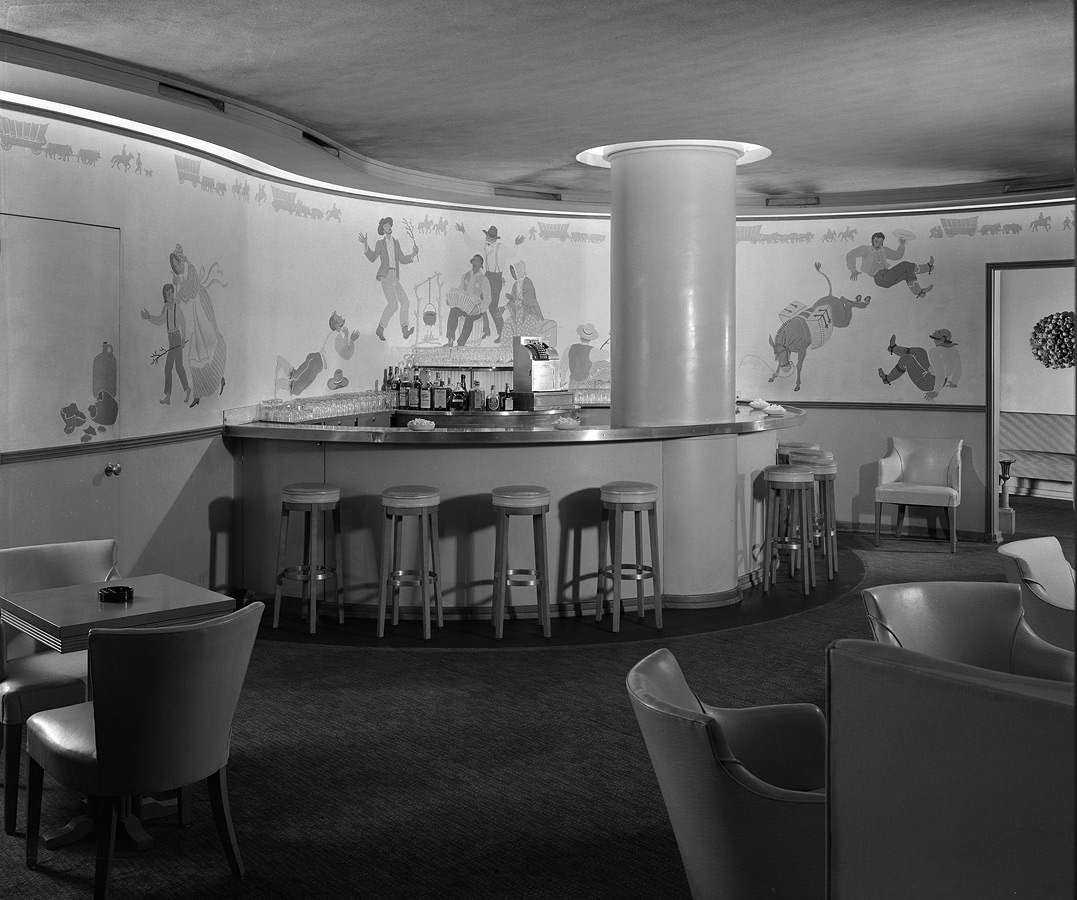
Westport Room cocktail lounge with Western figures on walls. Chicago History Museum, Hedrich-Blessing Collection, HB-04696-C, Chicago, IL
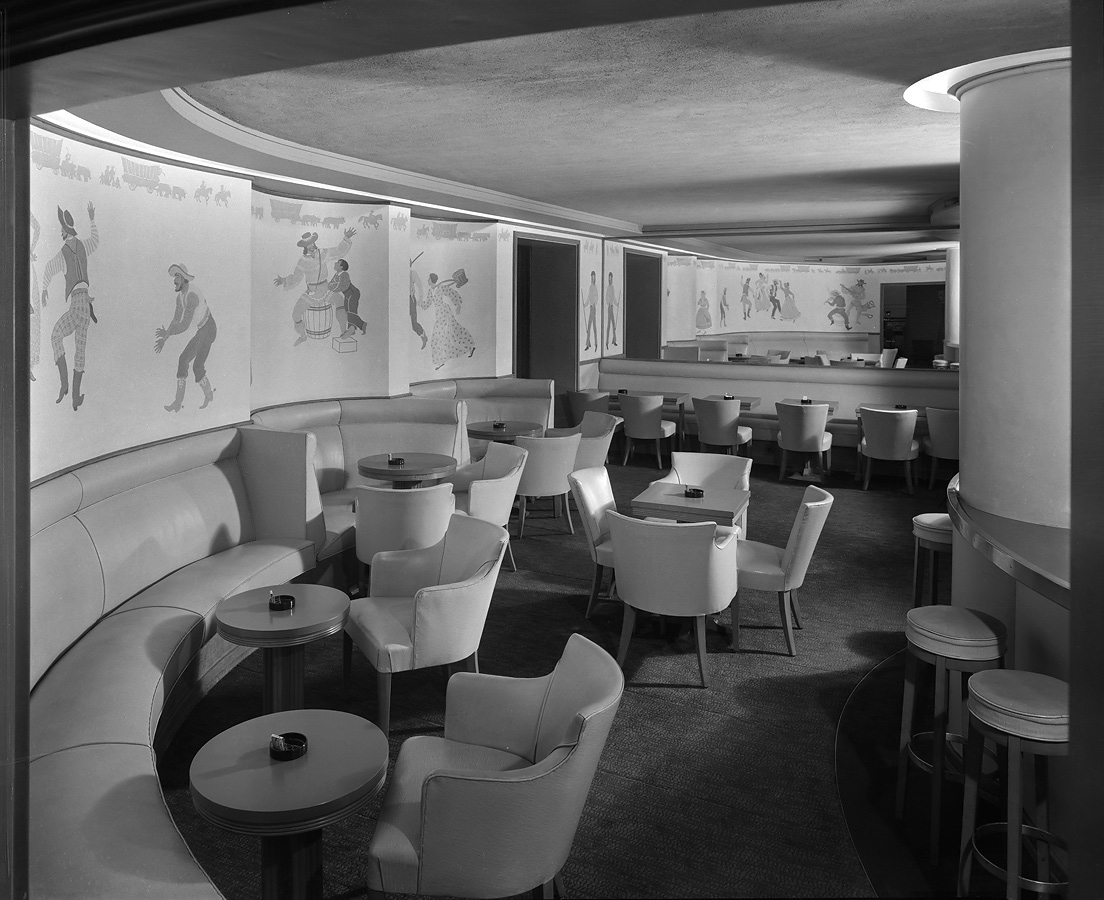
Westport Room cocktail lounge, with Western figures on walls. Chicago History Museum, Hedrich-Blessing Collection HB-04696-B, Chicago, IL
Meière worked out her studies for Western figures in gouache on paper:
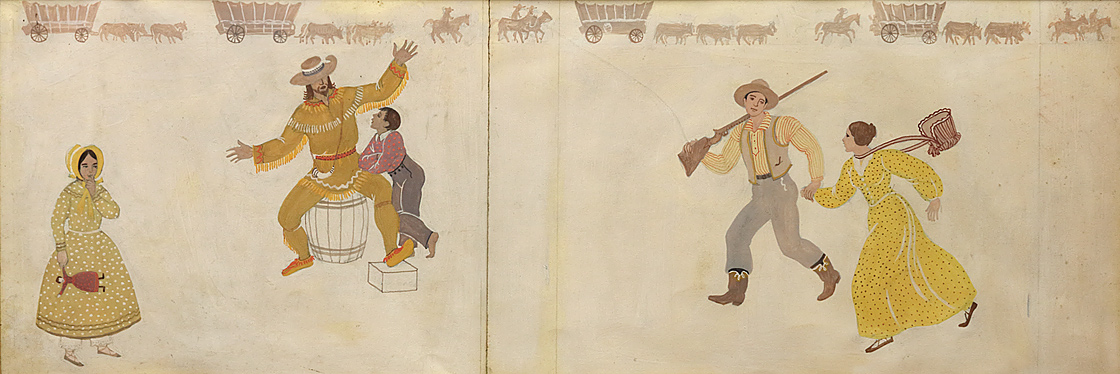
Study in gouache on paper for Western figures
The colors of Meière’s Western figures blended with those of the cocktail lounge walls and furnishings. As on the Westport Room restaurant menus, lithographs of Meière’s Western figures adorned the covers of the wine list:
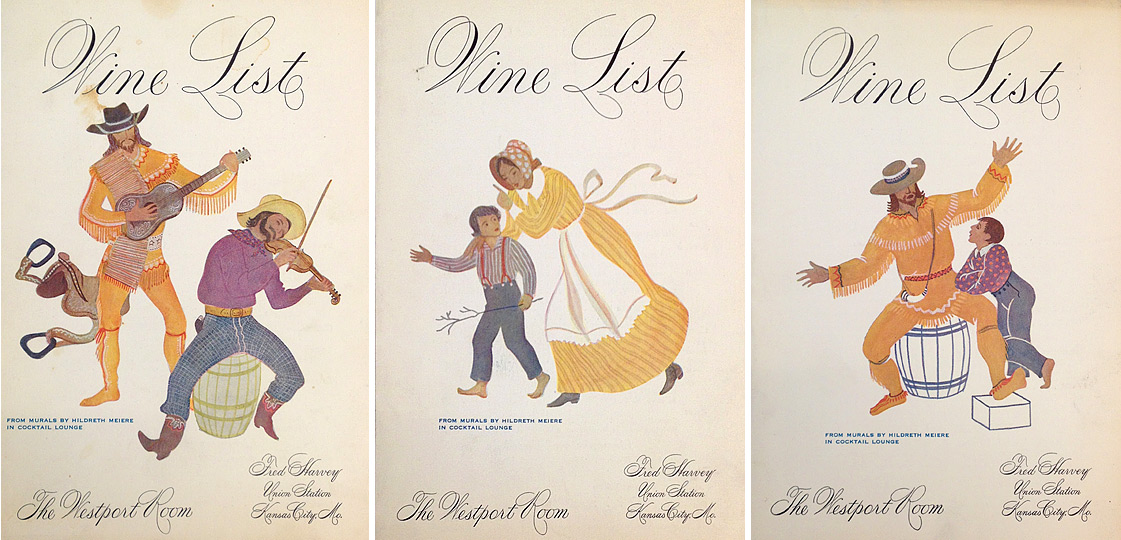
Western figures on Westport Room cocktail lounge wine lists. Hildreth Meière papers, Archives of American Art, Smithsonian Institution, Washington, DC
Although the Westport Room murals that were reconfigured and relocated to a different site in Union Station, the paintings on the walls of the cocktail lounge are no longer extant.
Hildreth Meière, letter to Byron Harvey June 17, 1937. Hildreth Meière Papers, Archives of American Art, Smithsonian Institution, Washington, DC. See Catherine Coleman Brawer, Walls Speak: The Narrative Art of Hildreth Meière (St. Bonaventure, New York: St. Bonaventure University, 2009): 74-75.
For a full discussion of Mary Colter’s limited role in the modernization of the Westport Room, see Fred Shaw, False Architect: The Mary Colter Hoax. Inverness, Illinois, 2018, chapter 34. His careful research refutes Colter’s claim that she was the architect and decorator responsible. He clarifies the roles of Byron S. Harvey, President of Fred Harvey, and Robert J. Raney of Fred Harvey and Johns Harley Hopkins of Holabird and Root.
Shaw, chapter 34.
Colter, letter to Meière, October 20, 1936, HM Papers.
Meière, letter to Harvey, November 10, 1936, HM Papers.
Mary Kimbrough, “She Finds an Education in her Art,” St. Louis Post Dispatch, October 14, 1955. See also Brawer and Kathleen Murphy Skolnik, The Art Deco Murals of Hildreth Meière (New York: Andrea Monfried Editions, 2014): 19-21.